21 April 2020 : Home learning
Remember to read today and work on your spellings/times tables. The BBC Bitesize Daily lessons and resources are also excellent. You can watch them on your tv, tablet or laptop. A full menu of how to access can be found here. We use White Rose to aid our maths planning at school and they have lots of resources too https://whiterosemaths.com/homelearning/.
Maths
Look at the 3D shape mat.
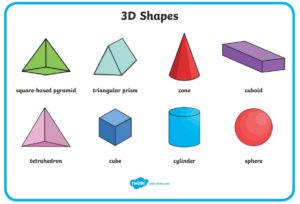
List the shapes and write the properties of each one.
Pyramid – 5 faces, 5 vertices (corners)
Sphere – 1 face, 0 vertices
Challenge : find some objects around your house that are the 3D shapes
eg a book is a cuboid, a toilet roll is a cylinder, the roof of the house is a pyramid
Reading
Sing the alphabet song : https://youtu.be/jPVbJ-IaHIw
Go on a scavenger hunt around your house or garden. Try to find something beginning with each letter of the alphabet.
Challenge : write out the alphabet and the item you found beginning with that letter.
Topic – History
Have a look at the photos of the old toy. It belongs to one of the teachers.
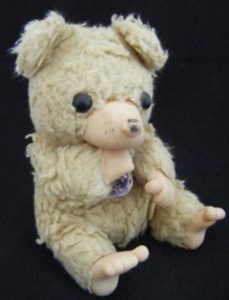
Write 3 (or more) questions that you would like to find out about the bear. Eg When did you get it? How old is it? What did you call it?
21 April 2020: Home Learning
Good morning. Hope you had a good sleep last night and that you’re ready for your learning today. Remember to get outside for some fresh air too – this is just as important for you and your mental health.
Your learning for today is…
Year 5 Maths Task
Answers from yesterday:
- 58cm
- 34cm
- 70cm
Challenge
14.2cm
Starter
Write down as many number facts that you know about 1,092. Think about addition and subtraction calculations, partitioning, multiplication and division, part-whole models.
Your learning today is area.
To calculate the area of a rectangle or a square, multiply the height by the width.
- How many rectangles can you draw with an area of 24cm²?
- Mo buys a house with a small back garden, which has an area of 12m². His house lies in a row of terraces, all identical. If there are 15 terraced houses altogether, what is the total area of the garden space?
Challenge
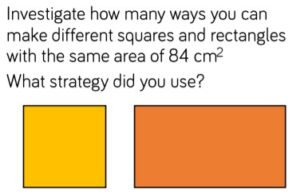
Year 6 Maths Task
Answers from yesterday:
Solve puzzles
Today’s maths is a problem solving task that uses times table facts and mental addition.
Problem solving – Zids and Zods
Challenge
How many different solutions can you find?
How do you know you’ve found them all?
Year 5/6 Reading Task
Your learning today is retrieval.
First of all, you should re-read the text from yesterday (The Cave).
Next, you should answer the retrieval questions.
For a challenge, create your own retrieval questions for someone in your house, or even better someone in your class, to have a go at – remember that you’ll need to know the answer so you can check if they’re right or not.
Year 5/6 Writing Task
Re watch the video from yesterday.
https://www.youtube.com/watch?v=-45TbOGadro
Read your work from yesterday. ChARM it! Check for punctuation errors, missing words and sense. Add more to a sentence or paragraph. Remove anything that you don’t like. Move a clause, phrase, word or sentence to improve the flow of your work.
Now, publish your work by rewriting in your best handwriting and sending it to your teacher to add to our Class News page.
21 April 2020: Home Learning
Hi children,
Here’s a SUPERMOVERS clip to get you going today!
https://www.bbc.co.uk/teach/supermovers/ks2-maths-the-8-times-table-with-filbert-fox/z4mrhbk
Here are your activities for today – have fun!
Keep up that reading and times tables learning.
Keep in touch – if you haven’t emailed us yet, please do!
Stay safe.
Team 3,4
Maths
Answers from yesterday:
Answers Y3 place value – further practice – counting in 100s and 50s Answers Y4 place value – further practice – representing numbers up to 10,000.docx
Today:
Y3 place value – further practice – representing numbers up to 1000
Y4 place value – further practice – partitioning.docx
Reading
Can you still remember the poem that you learnt yesterday?
Which poem did you choose?
Writing
Answers from yesterday:
Write a recount: ‘Narrow Escapes’. Our writing focus this week is to use adverbs and adverbials in our writing of a recount.
Take notes from a video:
- Watch the video clip about the Impala and the Leopard. Don’t be worried: it has a happy ending!
- Read Impala Notes. Fill in the answers. Write as much description as you can. Watch the video again to help you.
- Extra challenge: Write some sentences about the video using adverbial phrase mat
20 April 2020: Home Learning
Good morning! We hope you all had a lovely Easter and that you spent some more quality time with your families. We hope that lots of you had a go at the Easter challenges we set for you. We would love to see some photos of these, so please send some our way!
Anyway, it’s back to learning time. Remember to put lots of effort in and still think about your presentation.
Your learning for today is…
Year 5 Maths Task
Starter
Have a game of times table bingo with someone.
Your learning today is perimeter.
To measure the perimeter of a shape, you add up all the sides. A composite shape is a shape made up of two or more geometric shapes, like the ones below. They are made up of two rectangles.
1.

- How many composite shapes can you draw with a perimeter of 34cm?
3.How many regular shapes (squares, rectangles) can you draw with a perimeter of 26cm?
Can you use any decimal numbers?
Challenge
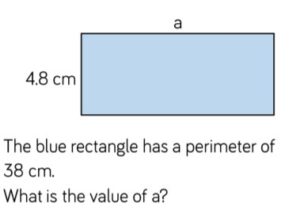
Year 6 Maths Task
Four operations
Write the answers to the questions in your exercise book. If you’ve forgotten some of the ideas, your CGP books might help. Remember, you can email your teacher if you’re still unsure.
Challenge
Choose one of the problems and write your own similar question.
Year 5/6 Reading Task
Your learning today is a mix of retrieval and inference.
First, you should read the text – The Cave.
Your first task is to draw and label a picture of Mary. You’ll have done this before in your reading lessons at school. If you’re feeling arty, you could draw an actual picture of Mary, or, you could draw an outline (like a Gingerbread person). Around the outside of your person, you should label it with things from the text. This could be facts (eg her toenails are painted) or it could be inferences you’ve made about her personality (eg I think she’s brave because…).
Your second task is to imagine you are Mary when she realises that she is in a cave (towards the end of page 1). Your task is to draw what she can see around her – remember this isn’t an art lesson. Once you’ve drawn everything, use evidence from the text to label your picture. For example, you could label the floor as ‘highly uneven, but largely flat’.
For a challenge, you could write either a short setting description, or a short character description (or both!). Whichever challenge you choose, remember to use evidence from the text.
Year 5/6 Writing Task
Get thinking…. Get talking. Have a discussion with someone about the following questions.
Is it possible for us to touch clouds?
What are clouds made of?
Can we touch what they are made of?
What is the sky?
Where does the sky begin?
Why is the sky blue?
Watch this endearing video about a father and son creating clouds.
https://www.youtube.com/watch?v=-45TbOGadro
Today you have a choice of tasks:
Write a set of instructions for creating clouds based on the video. Include imperative verbs (cut, push, blow).
Write a narrative about how other natural phenomena is created (lightning, thunder, wind, snow)
20 April 2020 : Home learning
Morning!
Well, the Easter holidays are over. It may not have felt much different to the previous two weeks, but we hope you had some egg-cellent fun and enjoyed the sunshine. Here are your tasks for today. Each day we will set three main tasks.
We would also like you to read for at least twenty minutes per day – to yourself, your mum, dad, teddy or pets. It could be in two, 10 minute sessions.
Keep reading anything and everything. If you have run out of your own books to read, there is a fab online library of eBooks to read on https://www.oxfordowl.co.uk/for-home/find-a-book/library-page/
Just register on the website, log in and choose what you want to read.
Each Monday, we will also upload a set of spellings for you to practise over the course of the week. Then on Friday, see if you can write them out without looking at them. Someone could test you if you want.
Y2s will also have a set of times table or division facts to learn too.
Weekly spellings :
Y1 : was we were where you your
Y2 : half hold hour improve kind last many mind money most
Times tables : times 10 and divide 10
You can contact your child’s teacher if you are not sure about any of the learning or want to send us photos or messages about what you’re doing.
1K – Miss Parling – katieparling@spherefederation.org
1,2V – Mrs Latham – vickylatham@spherefederation.org
2KN – Miss Lowry/Mrs Lake – kaylowry@spherefederation.org natalielake@spherefederation.org
Maths
Warm up by singing the shapes song – https://youtu.be/WTeqUejf3D0
Go on a shape hunt. Look around your house see which 2D (flat) shapes you can see.
Draw the shapes from the song or shapes that you see.
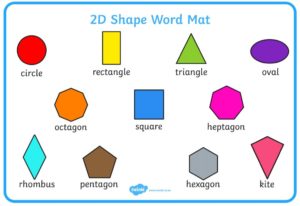
Challenge : Write what you know about each shape.
Eg A square has 4 sides. It has 4 corners. The sides are straight and all the same length.
Reading
Read the instructions about how to make a fruit salad. Answer the questions in your home learning book.
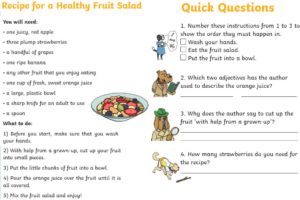
Challenge : If you can, make your own fruit salad.
Topic – Science (observing nature)
Find three animals outside. Find out their name, write down where you saw them and draw or take a picture of them.
Do not pick them up!
Challenge : Find out/make up and write a fun fact about each one.
eg Blue Tit
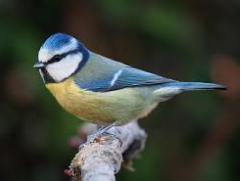
I saw it in the tree in my back garden, singing.
Fun Fact : As they get older, their colouring gets brighter.
20 April 2020: Home Learning
Hi children,
How are you all? We hope that you had a fabulous Easter break. Did you eat any chocolate eggs or have an egg hunt? We have all been eating plenty of chocolate over the holidays! We have also been enjoying the sunshine from our homes and gardens.
We’d love to hear from you and find out what you have been doing to keep busy. Remember to keep in touch through email. Send us any pictures that you might want featured in our weekly posts.
Enjoy your learning activities for today – remember to read every day for at least twenty minutes and learn your times tables too.
Take care and stay safe!
Team 3,4
Maths
Y3 Place value – further practice – counting in 100s and 50s
Y4 place value – further practice – representing numbers up to 10,000
Reading
Writing
Today we are going to recap on adverbs and adverbials. Work through the Powerpoint – Adverbials 1.
Then, complete the task: Day 1 adverbials OR for a more challenging task: Day-1-adverbials CHALLENGE.
Copy the sentences out into your book and take care with your handwriting and presentation.
The answers will be available tomorrow.
A revision prompt is available for printing or if you do not have Powerpoint on your computers Revision adverbs.
06 April 2020: Home learning – answers
Good morning everyone!
I hope you have all had a lovely weekend. As I’m sure you know, we are setting some activities for you to do over the Easter holiday – things a bit different to our regular posts. However, I know some of you will be desperate to know the answers to your maths learning from Friday, so here they are:
Year 5 maths task
Answers
- 500
- 50
- 5
- 2700
- 270
- 27
Using what you have just worked out- solve the following calculations.
- 1200
- 600
- 300
- 900
- 300
- 180
Year 6 maths task
2016 Arithmetic (2) Answers.pdf
Year 5/6 reading task
Easter home learning
As it’s the Easter holidays, we’re taking a break from the daily home learning tasks. Instead, here are a range of activities that you might like to try over the two weeks. The tasks are creative and are designed to allow children the opportunity to enjoy some different learning, perhaps alongside family members. A few key points…
- The list will be the same across year groups, meaning if you’ve more than one child, they might work on it together in some way.
- Some of the tasks can take a bit longer, like a mini-project, and others match Creative homework tasks.
- You can encourage your child to do some or all of the activities – they’re all optional.
- During this time, you can still email your child’s class teacher about the home learning, although they may not respond as quickly as they have been doing.
- Teachers will return to daily home learning tasks on Monday 20 April.
Art Attack
Andy Goldsworthy is a British artist who creates art using things he can find in nature. The artwork shown here was created using different leaf types and creating a pattern. He creates his art outside as he likes the fact that it’s temporary and won’t be around for long!
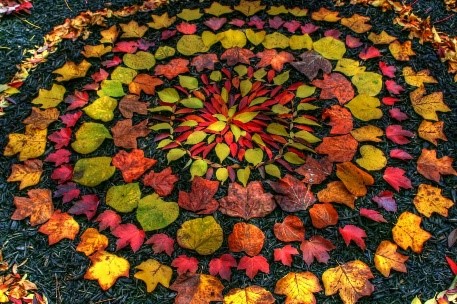
Create your own piece of art using different materials you can find around your home or in the garden. You could even create some ‘rubbish art’ using only items that have been used and would be thrown away or recycled.
Take some photographs and send them to your teachers.
Hunted
Create your own treasure hunt with cryptic clues for your family members to complete. Make the clues as tricky as you can. What could be the prize for the winning hunter? Maybe, this could tie in with a family Easter egg hunt.
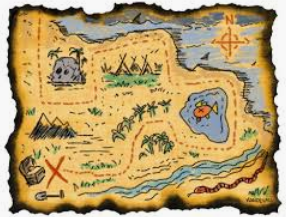
Secret Message
Create your own invisible ink.
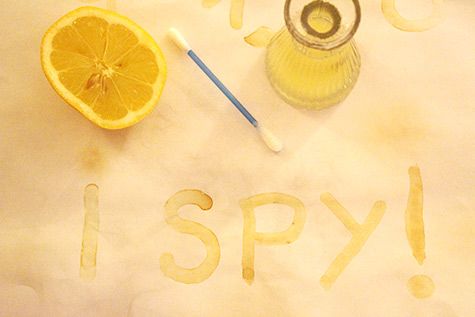
Using a spoon, mix water and lemon juice. Dip a cotton bud into the mixture and write a message onto the white paper. Wait for the juice to dry so your message becomes completely invisible. When you are ready to read your secret message or show it to someone else, heat the paper by holding it close to a light bulb – be careful: maybe ask an adult to do this part. As the mixture heats up, your message should reappear so people can read it again.
Alternatively, the same result can be achieved by writing the message on white paper with a white candle or crayon. Then, paint over the message using coloured paint to reveal the writing.
For a challenge, come up with your own way of making invisible ink and try it out on your family.
‘Board’ Silly
Design and create your own board game for you and your family to play – perhaps play some existing board games first to research ideas.
There are a few key things to think about:
- What will your theme be?
- Will there be any ‘snakes’ or ‘ladders’ style elements?
- Do you need to make a dice using a cube net?
- Will there be any extra challenges or forfeits if you land on certain numbers?
Enjoy your games!
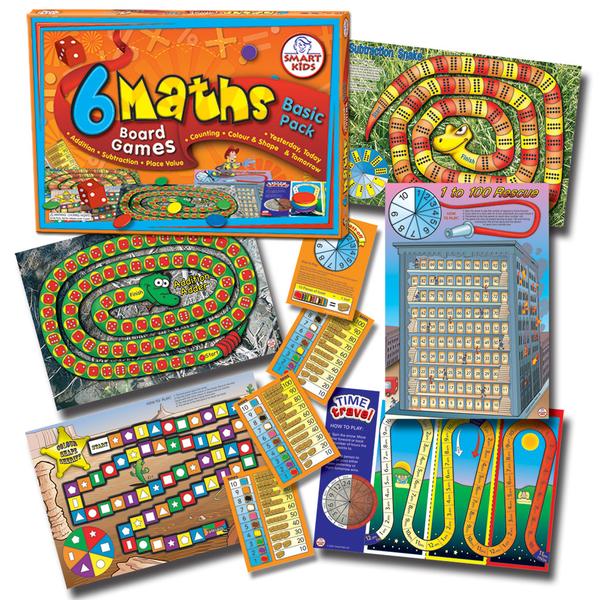
Extreme Reading
Reading is a great way to relax and learn about the world around us; also, reading regularly can help us to stay happy and healthy. This challenge is all about making reading even more fun. We’d love to know how many places you can read in. Try to read in a different place each day. Take photos or draw a picture of you doing it, if you can.
You could read…
- in a den that you’ve made
- up a tree
- under the bed/table
- to the dog/cat
- looking in a mirror
Stay safe and send your class teacher some pictures.
Come Dine/Bake with Me
Have your very own family ‘Come Dine With Me’ experience. Each family member could cook a meal or a course and then you must score each other out of ten. Similarly, each family member could bake something and you could all have a tasting after where you give points (like on Great British Bake Off). You don’t have to work on your own – you could help an adult.
Who will win?
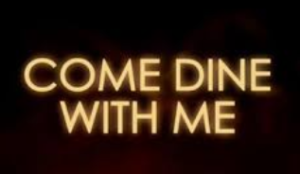
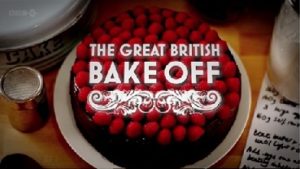
Den Building
Who doesn’t love making a den? Either in your house, or in your garden, spend time building a den and enjoy some time relaxing in it – if there’s more than one of you, you could make it a competition. Use whatever materials you can find and see how creative you can get.
You could also read in it and combine this challenge with the ‘Extreme Reading’ one.
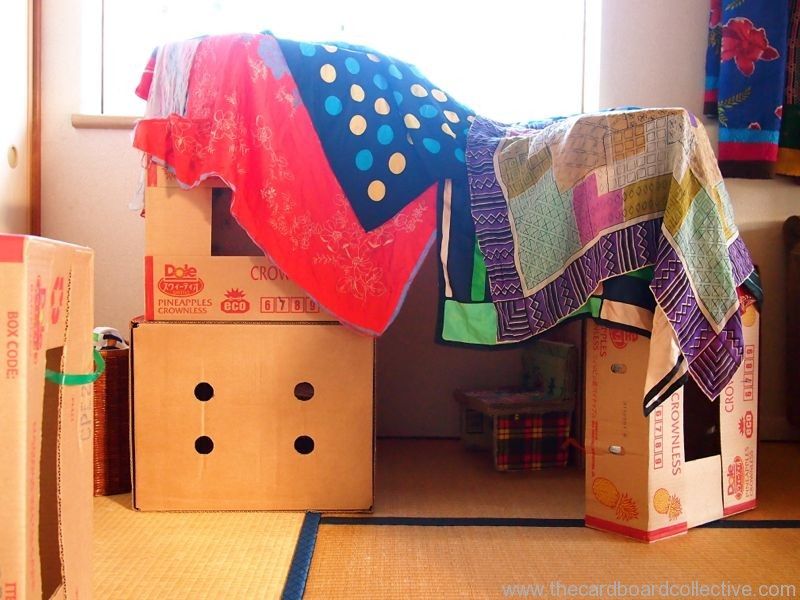
Get Ya Body Movin’
Staying physically active plays a crucial role in keeping us happy and healthy; it boosts our mental and emotional health, too. This task has three options – all of which are designed to get people moving during the holidays. You could include your family as well.
Option A: Create your own ‘Ninja Warrior’ style challenges in the garden or your house. Try to include a range of activities that include jumping, balancing, stretching, climbing and, if you’re feeling brave, water. The adults in your family will love a water challenge.
Option B: Create your own Joe Wicks style workout video. You could do it with your family or film yourself and send it to your friends. You might like to check out Joe Wicks’ YouTube channel for inspiration.
Option C: Choose your favourite song and create your own ‘Wake Up Shake Up’ (WUSU) dance routine. Again, you could lead this for your family to join in or film yourself and send it to friends or other family members. This’ll be a great way to get everyone dancing.
3 April 2020 : Home learning
Happy Friday everyone. Hope you’ve enjoyed this week’s learning. You could ask someone to give you a little spelling test/times table test on this week’s lists. Also, remember to read for 20 minutes today.
Maths
Maths fluency is like becoming fluent in reading – it involves lots of practising. Have a go at the fluency questions below. Some you might be able to do in your head or you might prefer to draw it or use equipment (or fingers). Write the questions and answers in your home learning book.
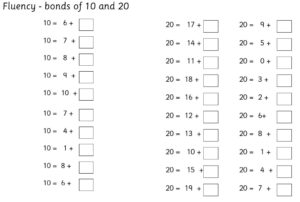
Reading
Go on a noun hunt around your house. Write a list of the nouns you find eg spoon, dog, garden.
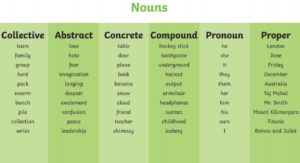
Challenge: Put those words into sentences. Remember your ‘must dos’.
Topic – Science
We were due to do a science investigation about floating and sinking. You could have a go at home though! Find some toys or items from around your house. Check with as adult that it is ok to put them in water. Then predict whether each item will float or sink. Check if your prediction was correct by putting the items in a bowl or container of water (or you could do it at bath time if you’re allowed).
Draw or write lists of the items that float and the items that sink. What do you think that is?
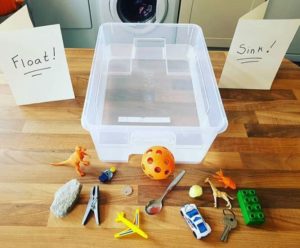
3 April 2020: Home learning
Hi Children – the last day of your home learning before Easter Holidays! Yay!
Well done to all of you (parents included) for working hard at home over the last two weeks. We REALLY appreciate all of your messages, emails and photos.
Here is your learning for today:
Reading – Love of Reading.
In school, we normally have one session a week where we all relax and enjoy a good book. Read your own reading book for at least 20 minutes – and enjoy!
Here is an additional task:
Maths
Y3 – multiplying 3 numbers.docx
Y3 – x and division (2) ANSWERS from yesterday
Y4 – bus stop division ANSWERS (UPDATED!)
Answers for today’s maths:
Y3 – multiplying 3 numbers ANSWERS.docx
Y4 – x and division (3) ANSWERS
History
We’ve learnt loads about the Roman invasion of Britain and the effect that this had on Britains living there at the time – specifically Boudicca and the Iceni.
What we haven’t talked about is when and why the Roman Empire ended. Read the text below to find out:
In AD410, the Roman Emperor Honorius sent a goodbye letter to the people of Britain. He wrote, “fight bravely and defend your lives…you are on your own now”. The city of Rome was under attack and the empire was falling apart, so the Romans had to leave to take care of things back home.
After they left, the country fell into chaos. Native tribes and foreign invaders battled each other for power. Many of the Roman towns in Britain crumbled away as people went back to living in the countryside.
In this history lesson, I’d like you to answer the following question:
Were the Romans good for Britain?
I’d like you to make a list or table of pros (positives) and cons (negatives) and debate these with someone at home. Here are some key points to get you started (you decide of they’re pros or cons):
- It isn’t nice to invade places. You wouldn’t like it if I invaded your home!
- The Romans treated Britons badly. They took their land, made them pay taxes, whipped them and killed them if they stood up to them.
- The Romans tried to change how we lived (houses, religion, language).
- The Romans protected us from other invaders.
- The invented lots of things that made our lives better: straight roads, central heating, sewage systems.
- They introduced things which had a big impact on Britain: calendar, language, Christianity.
Science – check out a brilliant science activity from Mrs Richardson.